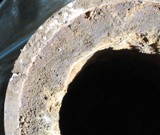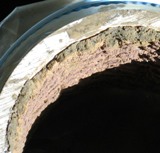Example: Consulting on water supply issues
The probem - Biofouling of production wells by manganese and iron bacteria
The client had a series of three wells that were experiencing excessive buidup of iron oxide, requiring frequent clean-out.
Wells in glacial drift aquifers of SW Ohio tend to produce water low in oxygen. This diminished oxygen leads to elevated levels of manganese and iron, which are soluble in their reduced oxidation states, Mn2+ and Fe2+. When these ions encounter oxidizing conditions at the surface, they convert to their insoluble forms, Mn4+ and Fe3+, and precipitate from solution as oxides. Normally, this precipitation is very slow, but certain bacteria catalyze it. They then coat themselves with the metal oxides and can quickly fill up a distribution system pipe, as shown by the following scales on 4-inch PVC production wells.
|
|
|
Well # 1, mostly manganese; 1 mm thick |
Well # 2, mostly iron; 200 mm thick |
Well #3, iron about same as manganese; 7 mm thick |
Each of these three wells is screened at about 80 feet. Well#1 has moderate biofouling, while Well #2 has severe biofouling, illustrated in these two SEM views
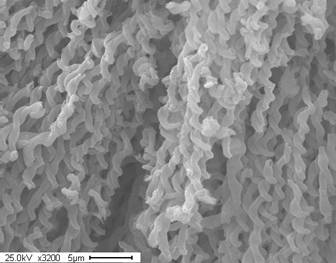
Filamentous Fe-oxidizing bacteria in well #2
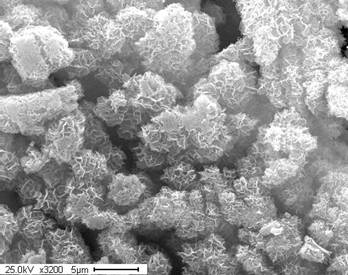
Mn oxide scale lining well #1.
The Fe content of the scale, and hence the rate of biofouling, is related to the Fe content of the water:
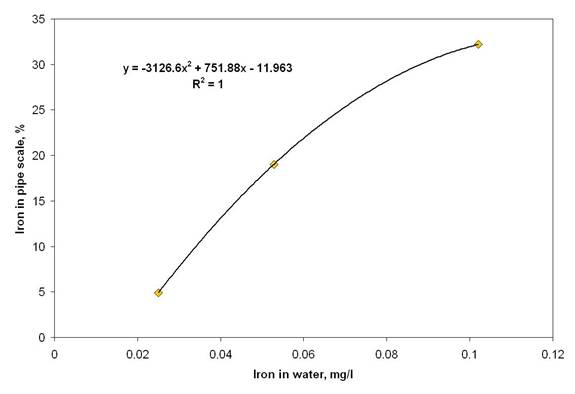
The solution - redrilling to deeper depths, increased well separation
The client had been previously offered several costly solutions that built treatment systems for the produced water.
Our analysis determined that the wells were creating a cone of depression deep enough that air was entering the well screens and mixing with the groundwater. This induced aeration was creating conditions favorable for the microbial growth and subsequent fouling. Three new well sites were tested under our supervision and two were selected to drill new, deeper wells with greater separation. This simple approach proved an effective cure for the biofouling at a fraction of the long-term cost of building and operating treatment systems.
See further work on Manganese

